Are you looking to boost website traffic without a high cost? You’ve come to the right place. In this article, I present you to ten proven ways to increase traffic to your website, from creating helpful content, to SEO, and incorporating social media and email marketing. Whether you are operating a blog, a small business website, or an e-Commerce shop, these ten actionable ways to increase traffic to your website will help you reliably build substantial, targeted traffic and also generate an online presence.
Let’s dive into ten practical ways you can boost your website traffic.So, here are ten actionable ways to increase traffic to your website.
1. Make Content That Helps People
Content is still ruler but as it were in case it conveys genuine esteem.
As well numerous websites drop into the trap of creating content fair for the purpose of distributing something. The issue? In the event that your content doesn’t illuminate a issue, reply a address, or offer significant knowledge, it won’t draw in or hold the correct gathering of people.
Your guests are seeking out for answers. They need to achieve something: settle an issue, learn a ability, get it a concept, or make a choice. When your content makes a difference them do that, they’ll keep in mind you and they’ll come back for more.
Here’s how to do it right:
Get it your audience’s torment focuses.
Begin by recognizing the common questions, battles, or objectives your perfect gathering of people has. You’ll be able discover these through:
FAQs from clients or clients
Comments on your web journal or social media posts
Questions posted in gatherings like Reddit or Quora
Watchword inquire about devices like AnswerThePublic or Google’s “People Moreover Ask” area
Make Content around particular issues.
Rather than composing wide or nonexclusive posts like ‘Tips for Eating Healthy,’ get particular. Something like ‘How to Eat Sound on a Budget After You As it were Have Time to Cook Once a Week’ is more focused on and supportive. Specificity makes your content feel individual and important and it stands out in a swarmed look space.
Make it noteworthy.
Grant your perusers something they can really do after perusing your post. Utilize checklists, how-to guides, step-by-step enlightening, and real world illustrations. Content that leads to activity is distant more locks in than something that fair clarifies a concept.
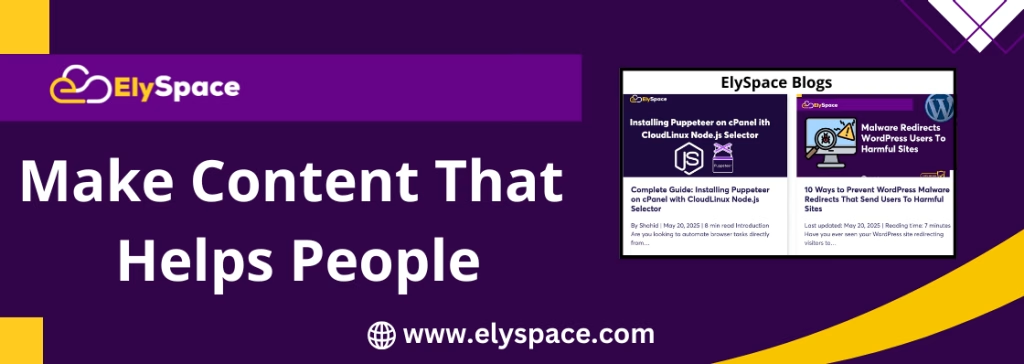
Example of high quality blog content with clear structure, headings, and informative sections
Structure it for coherence.
Utilize clear headings, brief sections, bullet focuses, and visuals where accommodating. No one likes to scroll through a divider of content. Great structure keeps individuals on your page longer and progresses SEO.
Keep it up to date.
Content that made a difference your group of onlookers a year back might not be important nowadays. Upgrade your top performing posts routinely to reflect modern patterns, instruments, or information.
2. Become an SEO Pro to Increase Traffic to Your Website
Once you get past the technical aspect, Search Engine Optimization (SEO) is really just helping people and search engines find your content!
SEO is the bridge between what they are searching for, and what you have created a website for. If you can build that bridge, you can build consistent, highly applicable traffic, without paying for it!
Here is how you can start to become an SEO pro:
Start with Research
Keyword research is the most potent step in producing great SEO. This type of research gives you exactly what your ideal visitors are searching, and allows you to create content to satisfy those queries.
Here are some keyword research tools
Google Keyword Planner : Free, and can help you to find volume and competition.
Ubersuggest : They have a bunch of other tools, but will give you keyword suggestions, search volume, and content suggestions.
Google Autocomplete : Just start typing a word and watch the suggestions appear!
AnswerThePublic : This is dandy for search queries that are a question
You want to look for terms that have good search volume, and low to medium competition, especially if you have a new website.
Use Keywords Strategically but immoderately.
When you have compiled the list of key terms that you want to target, you will want to place them naturally in:
Page titles
Meta descriptions
Headigs (especially H1 and H2 tags)
The first 100 words of your content
Image alt text
URL slug (e.g., www.yoursite.com/home-workout-routine)
One thing to keep in mind as you approach search engine optimization is to avoid keyword stuffing. (Google’s algorithms are smart.) The more forced or robotic your writing sounds to human readers, the less likely you will rank in search engines. Always write for humans first and then optimize for search engines.
Optimize your on-page components.
These things offer assistance look motors get it what your page is almost, and offer assistance get your click-through rates up:
Page Title: This appears up in look comes about on Google and in browser tabs. Expressive, keyword-heavy and catchy are the foremost critical qualities.
Illustration: ‘Best Web Hosting Arrangements for Little Businesses | ElySpace’ (way better than fair “Web Hosting”)|Illustration: “Best Web Hosting Arrangements for Little Businesses | ElySpace” (way better than fair “Web Facilitating”)
Meta Depiction: A brief ad spot (150–160 characters) that appears beneath your page title in look comes about. Make a reason for somebody to check out your page, additionally incorporate your primary catchphrase.
Header Labels (H1, H2, H3): Utilize header labels shrewdly to illuminate Google on content structure, conjointly to assist isolate up substance for way better perusing assortment. Utilize as it were H1 tag once on a page by utilizing H2/H3 labels to organize subtopics.

SEO keyword research tool interface displaying search volume and competition metrics for web hosting terms
Speed of Location and Portable Neighborly
SEO isn’t fair words and expressions , specialized execution things as well. In case you have got a moderate, drowsy or mobile unfriendly site this will cause clients to bounce and harm your positioning. There are valuable instruments that test this, such as:
Google PageSpeed Experiences
GTmetrix
Mobile-Friendly Test
Develop internal and external links.
Link to other pages on your site when appropriate (internal links) and seek to earn backlinks from other reputable websites (external links). Both help Google to better understand the value and structure of your site.
3. Utilize Social Media to Increase Traffic to Your Website
Social media isn’t just for vacation pics or funny cat videos . It is one of the most powerful (and often undervalued) sources of traffic to your website!
When used purposefully and strategically, social media channels can help you build your brand awareness, build relationships with new audiences, and convert engaged social media users directly to your site.
Here is how to maximize social media traffic:
Focus on the right platforms
You can’t be everywhere, and trying to be will leave you burned out and producing a scattered outcome across platforms. Instead, focus on where your audience is most active:
LinkedIn : For B2B, professional services, interest-based brands, SaaS, consultants, and thought leaders.
Instagram : If you have a visual brand, lifestyle, fitness, fashion, food, or behind-the-scenes content.
Pinterest : It is a top referrer for traffic and especially related to DIYS, recipes, home, and blog content.
Facebook : Good for community, and sharing content in groups or supported with ads.
Twitter/X : Potential for real-time updates, and connecting with industry connections.
TikTok : A major player for short-form video, primarily targeted to younger audiences and creative spaces.
Share your content but intentionally.
Don’t just drop a link and hope people click it. Well written social posts should be engaging and fit the platform you’re on.
Use visuals and graphics that stand out.
Keep captions short and punchy, with a strong call to action.
Hashtags are your friend , employ them where it makes sense to enhance visibility.
Recycle blog content into small bites of social media tips, infographics, carousels, or video clips.
Apply the 80/20 rule.
To ensure you’re not annoying your audience with self-promotion:
80% of the content you share to entertain, educate, or provide value. Consider how to tips, memes, questions, user generated content, behind the scenes, or fun facts about the industry.
20% can promote your products, services, and blog posts directly.
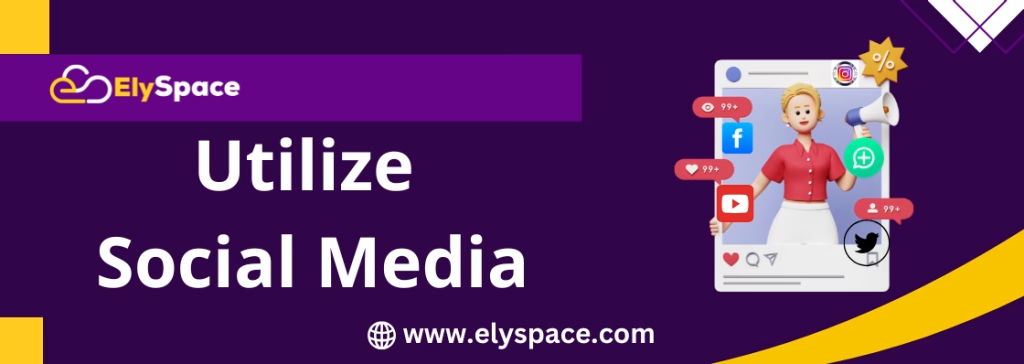
Social media marketing dashboard showing engagement rates and traffic referrals from Facebook, Instagram, Youtube and Twitter
Interact as a person.
When it comes to converting followers to customers, authenticity is important to the algorithm and to your audience. Respond to comments, ask questions, and participate in conversations. Thank people for sharing your content. If applicable, tag your collaborators or customers. The more human and interactive you are, the more likely your audience will stay engaged (and click through to your website).
Make use of scheduling and analytic tools.
Tools like Buffer, Hootsuite, or Later can help you plan ahead and automate your posts. Also, you should extract insights from your platform analytics to see what works, and adjust your strategy based on what you see.
4. Create Quality Backlinks Through Relationships
Links, like outdoor signs for your website, are like a thumbs up for search engines like Google. Linking from a relevant site, that people already trust, is a signal that your site is a reliable source of relevant content, meaning it should be indexed and ranked higher in the search engine results pages (SERPs).
For backlinks to be really good, they need to be the right kind of backlinks from the right sources of information.
Why backlinks are important:
They increase your domain authority, so you can rank higher in the SERPs.
They send referral traffic from other relevant authority websites.
They create brand awareness by introducing your content to new audiences
The important thing to remember is that not all backlinks are created equal.
A single backlink from an established authority site in your niche is worth more than hundreds of backlinks from random or low quality sites. Remember that relationship-building and not mass link-building strategy is the best approach for building quality backlinks.
Value-driven outreach.
Reach out to bloggers, editors, business owners and content creators in your space. Instead of asking for a link from them straight away, plan for establishing a relationship with them. You can compliment something they wrote recently, share it on social, etc.
After you reach out and establish rapport, offer something of value, e.g., a guest post, an expert quote or a co-branded resource.
Guest blog on reputable, relevant sites.
Writing an original article for a reputable blog in your niche can be an extremely good backlink strategy. You can:
Highlight your expertise
Reach a broader audience
Get a natural backlink in your bio or in the post
Just remember, when pitching a site you want to make sure they have real traffic, and are a good fit for your brand’s voice and audience.
Create linkable content.
Most people link to content that is useful, unique, and thorough. So aim to create an amazing resource or reference in your niche, for example:
Complete guides or tutorials
Industry reports or original research
Infographics and data visualizations
Tools, templates, or calculators
When you make content that is really useful to someone, they are more likely to share it and quote it.
Partner with other businesses and creators.
Find other businesses with which you can partner , co-hosting a webinar, co-creating content, or exchanging interviews. Partners are usually more likely to create natural backlinks to your site as well as expose you to their audience.
Don’t take shady shortcuts
Paying for links or engaging in low-quality link schemes can get you penalized by Google. Focus on earning your links through trust, value, and partnership not manipulation.
5. Maximize your website speed and user experience
You click on a website, and it takes five seconds , six seconds and still loading. You probably went back already and so will your visitors.
Website speed and user experience (UX) are essential to keeping engaged users and turning visitors into paying customers. Even a delay of one second can lead to higher bounce rates and fewer conversions.
Even more crucially, Google uses page speed as one of the factors for ranking, desktop and mobile searches alike. A slow, cumbersome site is bad for visibility, therefore bad for traffic.
Here are some ways to make sure your site is fast and usable:
Test your current speed.
Yes, it’s important to check where you’re at with the performance. Start with performing a performance check using tools such as:
Google PageSpeed Insights
GT Metrix
Pingdom Website Speed Test
These tools will provide you with highly detailed reports and scores on what is causing your site to slow down, as well as give you specific suggestions and solutions for improvement.
Here are a few common speed killers (and how you can accellerate your site):
1. Large, unoptimized photos
Compress your photos. You can use tools such as TinyPNG. You can also use formats such as WebP without sacrificing quality.
2. Too many plugins or scripts
Keep only essential plugins in terms of functionality, and remove all other’s. Be sure to remove those heavy third-party scripts that villify your site.
3. No browser cache
Implement browser caching so repeat visitors do not need to cancel and reload your entire page from scratch.
4. No content delivery network (CDN)
Use a CDN (Cloudflare or BunnyCDN) to help you deliver your site content faster, by using the servers closest to the target visitor.
5. Poor hosting
Your hosting provider is crucial for your site speed. Hosting can either increase or decease your site’s speed as well as it does not usually go unnoticed by Google. Cheap shared hosting may save you money upfront, however it will most likely put a toll on your traffic.
Hint: ElySpace is fast, reliable hosting, which is optimized for performance.
Ensure it is mobile optimized.
More than half of all web traffic is mobile, therefore it is critical that your site loads quickly and displays properly on all devices. Make sure you are using responsive design, test on various devices, and that your font sizes, buttons, and menus are all optimized for touch.
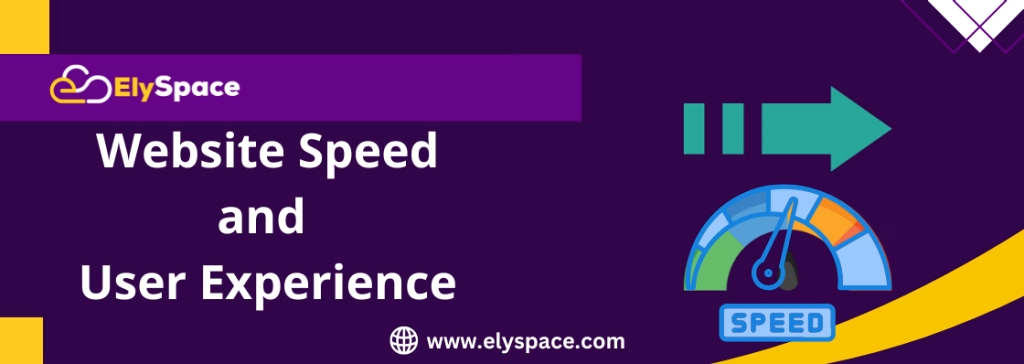
Google PageSpeed Insights results showing improved website loading times and performance scores
Streamline navigation and website layout.
A confusing website is likely to frustrate visitors and only increase your bounce rate. Make sure that:
1. Menus are clean and clear
2. Important information is easy to find
3. CTAs are easy to see and compelling
4. Pages don’t overwhelm users with clutter
Limit pop up options and confusion.
While pop-ups can provide a helpful conversion boost, often too many pop-ups can negatively impact UX, especially on mobile. Use abbreviating and make sure they are easy to close.
6. Email Marketing That People Want to Read
Email marketing may not be sexy, or new , but it can be one of the most effective and inexpensive ways to drive traffic to your website repeatedly, when done right. The secret sauce is, give value, not noise.
People have extremely crowded inboxes and short attention spans! If your emails are just a straight sales pitch, then people will a) ignore them b) mark them as spam. But if your emails give value, are relevant and timely – they will build trust, increase engagement and bring people back to your site for more.
This is how to do email marketing the right way:
Start with a good lead magnet.
Before doing email marketing, you’ll have to build your list. A lead magnet is anything of value (usually free) that you offer someone in exchange for their email address. It must provide value to someone , it must be worth having.
Good examples are:
A free eBook or guide
(10 Quick Fixes to Speed Up Your WordPress Site, for example)
A printable checklist or cheat sheet
(SEO Checklist for Small Business Owners, for example)
A mini Video Course or Webinar
Exclusive access to tools, templates or discounts
You want your lead magnet to make sense based on your service or content – so that you bring in the right people.
Add value consistently.
When someone joins your list, don’t just put them on a sales cycle right away. It is better to follow up your initial content with a series of email introductions for welcome purposes and to keep them engaged with consistent updates that help them.
Things to consider sending as ongoing emails:
Tips and how to content
Helpful tools or resources that you have curated
Case studies of past clients or success stories
Notification of all new blog posts or new features or new services
Some promotional items from time to time (but not too often)
Your goal should be that every time someone opens your email theoretically that they say ‘wow i’m glad I opened that.’
Segment your audience.
No more sending the same email to everyone, people expect personalized content that speaks to their interests and needs. There are many email marketing platforms that allow you ultimately to segment your list (Mailchimp, ConvertKit, MailerLite, etc…) based on:
What they opted in for
Their past usage data (open, click)
Their website behavior
Whether they are a customer (lead vs active client)
Example:
Someone who downloaded your resource package ‘Web Design Basics’ may wish to receive follow up emails on various topics such as: layout, UX, branding.
Someone who signed up via a blog post about hosting security is likely looking for content that is more technical in nature, and content relating to the service side of hosting updates.
You can send targeted emails that come across as a lot more relevant and that means improved open and click-through rates by segmenting your list.
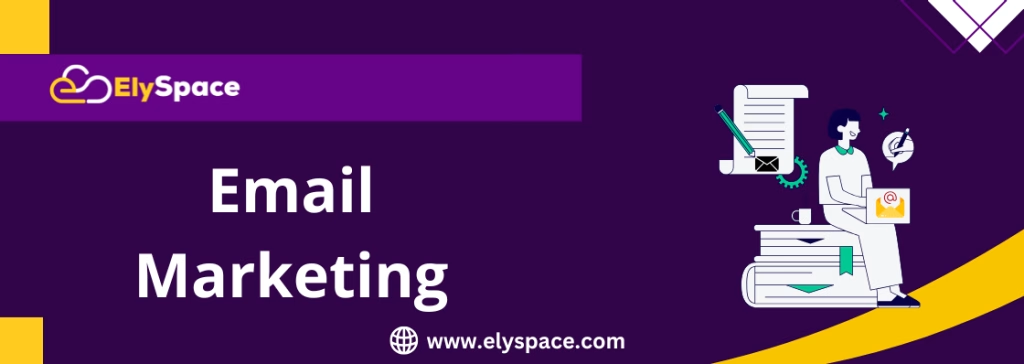
Email marketing analytics showing high open rates, click-through rates, and website traffic generated from email campaigns
Keep your emails easy to read and easy to do something with.
Use a clean layout, short paragraphs, and clear calls to action (CTAs). Always link to your latest blog posts, new service pages, or product launches simply link to anything you want to drive traffic to.
Test and improve.
Use A/B tests to test subject lines, send times, content, and more. Your chosen email tool will likely provide some reporting on open rates, click rates, and unsubscribes. So, use the reporting to refine your strategy.
7. Collaborate and Network in Your Industry to Increase Traffic to Your Website
Collaborating can create magic for bringing traffic to your website. Not only does collaboration expand your brand awareness into new audiences, but it also may evoke trust quicker because someone that already follows or respects your partner will probably notice you, too.
To keep it simple: Two heads are better than one and two audiences are better than one.
Here are some tips for growing your traffic through collaboration and networking with peers in your industry:
Seek collaboration opportunities.
Connect with brands, influencers, or experts in your niche who would complement or align with your brand. The most effective collaboration opportunities are with partners who share a similar audience (as long as they are not competitors).
Examples of possible collaborations include:
Co-hosting a webinar on a topic everyone can learn from.
Collaborating on a blog post or guide, where every author provides a different perspective.
Creating a podcast episode or video where you interview each other’s expertise.
Cross-promoting each other, such as shout-outs in 1 (or both) newsletters, or on your social media channels.
Bundling your services or providing discount if you offer relevant (but separate offerings).
Join online communities and industry groups.
You don’t always have to enter into a formal partnership in order to leverage networking opportunities. Sometimes it’s simply good enough just to show up in relevant spaces, and you’ll see opportunities all around you.
These are excellent industry specific places that are worth joining:
– Facebook and/or LinkedIn Groups specific to the industry
– Subreddits and forums (e.g. r/Entrepreneur, or specific niches)
– Slack, or Discord channels for your profession
– Masterminds or meet-ups for creators/freelancers/small business owners.
Be helpful, answer questions, share your knowledge, and when relevant, link to your content as a suitable answer (without being spammy).
Attend (or speak at) online and in person events.
Conferences, webinars, workshops and trade-shows are excellent ways to build real connections with others. Don’t just collect business cards, but build relationships!
If you have expertise to share; apply to be a guest speaker, or on a panel. Not only is it a great way to establish authority, but you will also earn links back to your own site, from their event site, a high quality backlink.
Help others, and they’ll help you.
One of the easiest networking strategies: give first.
Share others’ content on social media
Leave thoughtful comments on their blog posts or videos
Refer their services when it is appropriate
As you consistently provide value to your peers, many will reciprocate naturally – by linking to your work, mentioning you in content, or including you in opportunities.
8. Analyze Data to Work Smarter
Guesswork is never a tactic when it comes to growing your website. If you aren’t paying attention to how visitors interact with your site, you are flying blind and wasting time creating content or taking actions that are not even effective.
This is where analytics comes in. You can use tools like Google Analytics, Google Search Console, and Hotjar (heat maps and behavior data), which gives you exceptionally powerful information in what works for your site and what does not.
This is how you can use analytics to help you focus on your traffic:
Know where your traffic is coming from
In Google Analytics, you can find traffic sources such as:
Organic Search (found you through Google)
Direct (typed your web address into the address bar)
Referral (came from another website)
Social Media (clicked through on social)
Email (clicked through from your email campaigns)
Knowing this information will help you to:
Do more of what works
Assess the effect of partnerships, advertising, and social media posts.
Identify your best performing content.
Identify your most popular pages and blog posts. What topics are attracting the most view time, views, and engagement?
As an example:
If your “How-to” guides have significantly more traffic than your opinion pieces, prioritize more how-to guides.
If a visitor sticks around for 4+ minutes on your case studies, share and repurpose them into social and your email content.
Let your performance guide your content calendar, instead of your personal likes.
Identify the drop off of visitors.
Utilize behavior flow in Google Analytics or look at session recordings with Hotjar to identify where most people are losing interest.
Are they bouncing immediately after landing on your blog?
Are they clicking on a call to action, but not completing the conversion?
Are mobile visitors dropping off faster than desktop?
These are clues to help identify UX issues, difficult navigation, or gaps in content.
Create goals and conversions.
You cannot improve what you do not track. Formulate clear goals – such as newsletter signups, contact form submissions, or product purchases – so you can track how well your traffic is converting.
And use that data to:
Refine your CTAs and landing page,
Test other content offers or
Identify where to improve the channels that are not working
Polish your email and SEO strategies

Google Analytics interface displaying website traffic sources, page views, bounce rates, and user engagement metrics
Use A/B testing to derive better results.
It would be worthwhile to try A/B testing of your headlines, CTAs, or layouts to understand what leads to better engagement or conversions. Even simple changes such, changing the wording of a button or headline can lead to notable changes.
9. Repurpose Your Content on Multiple Platforms
It takes a lot of time and effort to produce quality content , so why only use it once?
Content repurposing is simply the act of taking one piece of content and reimagining it into multiple formats for other platforms and audiences. It is not only efficient but also smart to maximize your reach, awareness, and clicks to your website without having to start from square one every time.
Why repurposing is a good idea:
Different people prefer different formats of content , some read, some watch, some scroll.
Not everyone sees your content on the first share.
Increased repetition affords greater brand recognition and interaction with users.
How to repurpose effectively:
Start with your best content.
When looking for content to repurpose, start with your blog, video or guide content that performed really well. If you’ve created a blog post that is ranking well in search or has been shared a lot, that’s your sign to try and repackage it!
Example: A blog post called ‘How to Start a Successful Freelance Design Business’ could be turned into:
A YouTube video or podcast episode where you share your journey and additional tips regarding the same topic.
A Twitter thread with each step outlined in a short, punchy tweet
A carousel post on LinkedIn or Instagram summarizing the key takeaways
A downloadable checklist or cheat sheet
An infographic for Pinterest or a blog sidebar.
Each piece also links back to your previous post, bringing the traffic full circle.
Make the content match the platform.
Each platform prefers certain content types:
Instagram: visuals, carousels, short videos
Pinterest: vertical infographics, visual guides
LinkedIn: professional insights, carousels, long-form posts
Twitter/X: threads, quick tips, thought-leadership quotes
YouTube: explainer videos, tutorials, interviews
Email: curated content, summaries with hyperlinks to full articles
Don’t feel you need to repurpose everything at once.
Space out your content repurposing over a few weeks (or even months). This will extend the life of each piece of content and consistently contribute to your content calendar without burning out.
Use tools to help you manage the workload.
Canva for making social graphics and infographics
Lumen5 or InVideo to turn your blog post into a video
Repurpose.io to automate cross-posting your audio/video content
ChatGPT to rewrite, summarize or reformat in other tones.
Always incorporate a clear CTA and link back to your site.
No matter what form of repurposed content you have, always include a CTAlike “Read the full guide,” ‘Download the checklist, or ‘Watch the full video.’ Get visitors back to the original source or landing page.
10. Actively Engage with Your Community
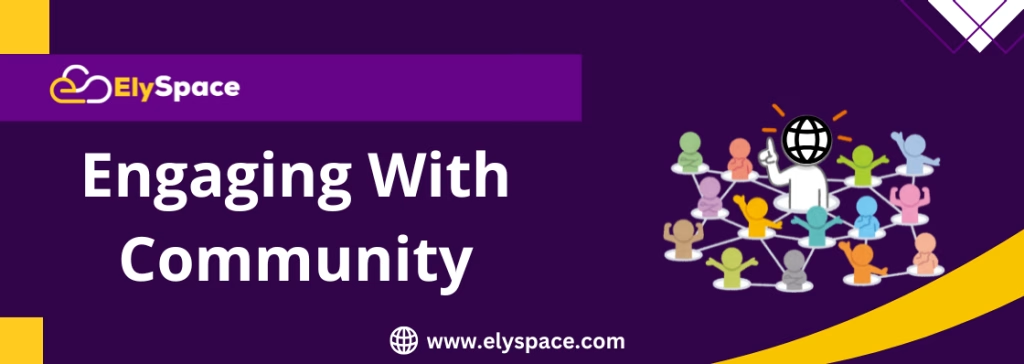
Online community forum with active user discussions, comments, and engagement around web design and hosting topics
You can spend every day making content, SEO will be improved, and you will be increasing ad spend; however, if you are not actively engaging with your audience, you are losing one of the greatest sources for traffic: community.
Creating a community around your brand and nurturing it takes time and consistency, but the benefits can be infinite without terrible consequences. A community of choice will not just consume your content, they will share it, return to it often, and bring with them other community members: friends, colleagues, family and new members.
Here is how to create and continue to foster engagement:
Be present and responsive.
Engagement starts with being present and engaged. Be sure to respond to blog comments, social shout-outs or mentions, DMs [direct messages], or email, etc. When your content is shared or acknowledged publicly, respond and acknowledge. A fast ‘Thanks for reading’ or ‘Great question’ will help with retention and loyalty.
People can tell when you are actually being present and engaged, and even if they can’t tell, they will likely return to your site again, and tell their friends, colleagues, etc. about you and your brand.
Ask Questions and Start Conversations:
Rather than just talking at your audience, you want to invite them into the conversation! Here are a few examples:
End blog posts with a discussion question like: “What has worked for you in terms of SEO?”
Post a poll or open ended question on social media
Ask for feedback via emails or surveys
Not only will this help you build engagement, but it will also provide useful information about what your audience cares about (hint: more potential content!).
Create a dedicated space for your community.
If you want to take it to the next level, consider developing your own space for discussions and connection. This could be:
A Facebook Group for your niche
A LinkedIn community for professional networking
A Discord or Slack channel for real-time connection and interaction
A forum or members’ area on your website
In your community space, share tips, answer questions, offer member spotlights, and provide early access to content or offers. The more value the community members receive for being part of your community, the more engaging they will find it and will continue to visit your site.
Show up consistently.
Community is built on trust, and trust is built over time. Whether it’s a weekly email, a series of regularly scheduled live q and a sessions, or a daily presence in your group, showing up will indicate to your audience that you are committed to them.
Even engaging in thoughtful conversation in just 10 minutes a day can be impactful.
Recognize and celebrate your community.
Feature user-generated content on your website or in your social profiles.
Write a ‘featured member’ or ‘success story’ blog post.
Give shout-outs in your newsletters or live sessions.
People love to be recognized when you acknowledge your audience members, they generally reciprocate with loyalty, traffic, and referrals.
Conclusion: Transforming Strategy into Lasting Growth of your Website.(Increase Traffic to Your Website)
Growing your website traffic doesn’t have to be a mystery or a money pit. You’re using ten practical, proven strategies that will lead you to not just follow the numbers but build long-lasting relationships, create true value, and ultimately create a brand that people trust, and return to.
Each step and practice , optimizing your website speed, drafting insightful emails, etc. builds on each other. Over time, the synergy of each of these efforts, makes an incredible compound system of content, engagement, and trust that causes people to come back to your website over and over.
So start wherever you are, pick a few strategies to focus on and take small steps of improvement every week. Traffic will follow, and more importantly , so will the right audience.
Need help in implementing any of these steps?
elyspace.com is here to help you with web design, hosting and digital strategy that drives real outcome. Let’s grow your traffic the right way together.
Frequently Asked Questions
1. How long before these strategies show results?
It depends on the strategy. Some tactics, such as improved page speed, sharing on social media, or sending an email newsletter, can drive traffic almost immediately. Other strategies, such as SEO and backlink building, typically take time — generally 3 to 6 months — to establish consistent ongoing growth. It is important to be consistent.
2. Do I have to do all 10 strategies at once?
Not at all. Start with the tactics that are most reasonable for you given your goals and capacity. For example, if you are just starting from scratch, focus on creating valuable content, improving SEO, and being active on one social platform. You can scale up when you are ready as your website and audience grow.
3. What’s the best way to do keyword research for SEO?
Use tools, such as Google Keyword Planner, Ubersuggest, AnswerThePublic, or Google’s “People also ask…” Look for keywords with good search volume, but low competition. Focus on long-tail keywords that solve a specific problem.
4. Are social media platforms able to drive website traffic?
Absolutely! Based on how you utilize it, social media sites like Instagram, LinkedIn, Pinterest and Facebook can produce a massive amount of high-quality traffic for you. When using these sites, remember to post regularly, engage with your followers/readers and link back to relevant pages on your website.
5. How does backlinking help generate website traffic?
Backlinks signal Google that your content is credible and worthy of being ranked. They also provide you the added benefit of referral traffic directly from the site with the link. Think about ways you can earn backlinks, like through guest Blogging, partnerships, and valuable linkable content; such as guides, services and tools, infographics.
6. What tools can I use to improve my website speed?
Here are a few tools:
Google PageSpeed Insights – for improvements suggestions on your overall website performance.
GTMetrix – for speed metrics and analytics.
TinyPNG – for faster loading images through compression.
Cloudflare CDN – for globally serving your content faster.
Using a high-quality hosting provider like ElySpace can help give you the reliability of speed.
7. What are some things to consider while developing a good lead magnet for email marketing?
It is important to create something that will solve an issue or provide immediate value. For instance,
free guides or ebooks
checklists or templates
webinars or mini-courses
exclusive discounts or resources
Ideally, the lead magnet should be closely related to your core offer or service.
8. How can I tell what content is going to be the most effective?
You can use analytics tools to look at Google Analytics, Search Console or Hotjar to help you track which posts or pages had the most visits and engagement and than look at the email click-through and social shares. If it’s working – now you want to double down!
9. Do I have to be on every social platforms?
Don’t know, you shouldn’t be unless you can. Pick 1 or 2 platforms that your ideal audience hangs out on. For example,
professional or B2B? LinkedIn would be a focus;
visual product or lifestyle brand? look towards Instagram or Pinterest;
younger or creative audience? consider TikTok;
10. Can ElySpace assist me with any of these steps?
Definitely, ElySpace offers fast and secure web hosting, professional design, SEO support and advice on best practices in digital marketing. Whether you need a new website or help with getting traffic strategies in place, we can assist with all of your growth.

